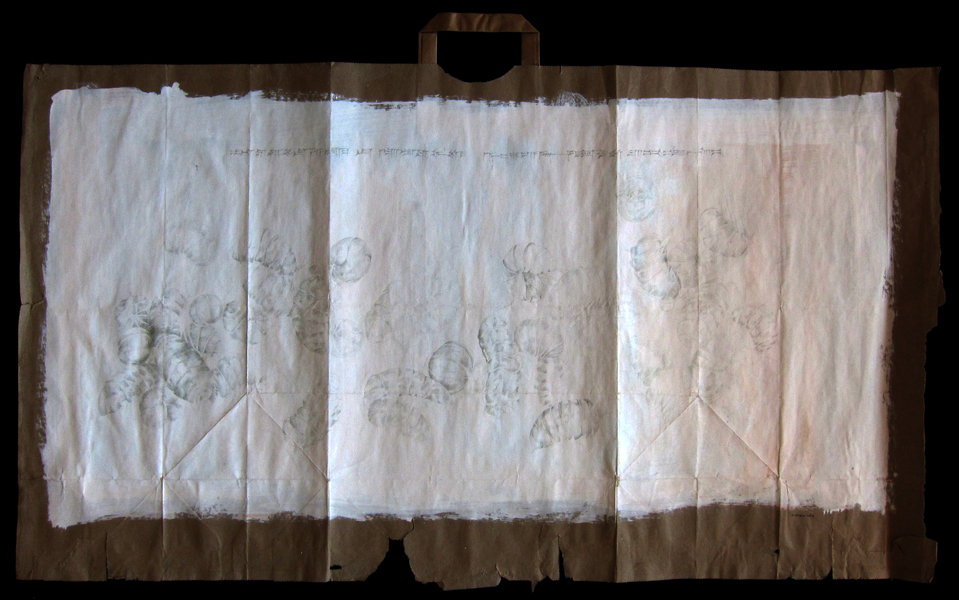
At the snort of the Bull, VI.119 – 120
Copperpoint on prepared ground on found paper
38" x 22.5"
Translation of the cuneiform: ""At the snort of the Bull of Heaven a pit opened up, a hundred men of Uruk all fell into it."
One hundred people die in this line (and more people die in the next lines). There is no other discussion of those lives or the consequences of their deaths.
Pillbugs live in cracks or pits in the ground. In the summer, I find them dead near my front door, and I sweep them up and throw them away, as if they were disposable life. But, pillbugs are the ancestors of an ancient form of life called trilobites. Like cyanobacteria, they are a life form that has outlasted every major environmental disaster, and their fossils have been found everywhere on earth. We don't know anything about the circumstances of their lives and deaths, but you can't say that pillbugs are inconsequential in the history of life on earth.
In our lives, we do not see the big picture; we can't see how the individual lives and deaths will be counted in the context of history. Things may be different than we see.
ABOUT THE GILGAMESH SERIES
This series of 10 drawings is based on the ancient Mesopotamian story of Gilgamesh. "Gilgamesh" appears on cuneiform tablets (an ancient form of writing on clay) dating to about 2000 B.C.E. It relates an epic journey made by the King of Uruk, Gilgamesh, and his friend, Enkidu. The story is also about what is and is not eternal and significant. These 10 drawings, like the story, are about permanence versus transience, and about trying to determine what is important and what is inconsequential.
The drawing substrate - paper bags - comment on disposability and value. Like excavated archaeological material (most of which is ancient refuse), when the paper bags are put into a different context, their significance changes. Also like excavated archaeological material, the paper bags will deteriorate over time. In this way, the drawings are like the ancient tablets on which the story of Gilgamesh was written.
All of the drawings in this series are made by drawing with sharpened silver or copper wire. The lines are created by transfered metal particles, which means that the drawings themselves will tarnish with time, like archaeological objects.



